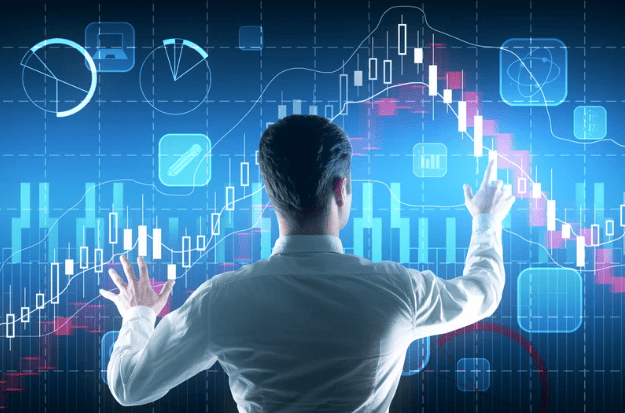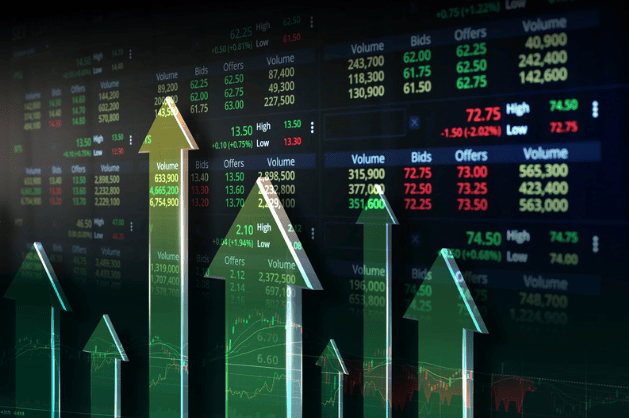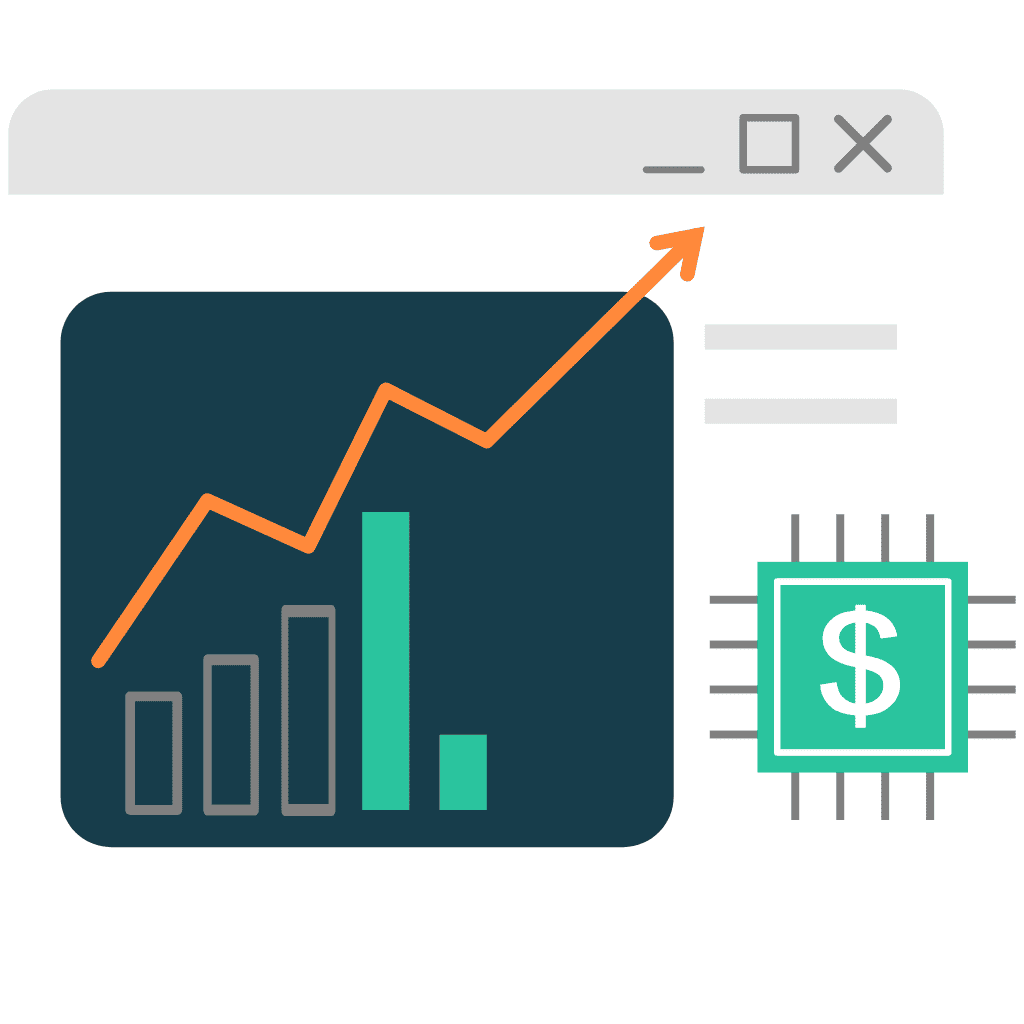


Explore Algorithmic Trading with our comprehensive guide. Uncover essential strategies, explore the best platforms, and understand the benefits and challenges. Whether you're a beginner or experienced trader, Algo Forest has everything you need to start mastering algo trading today!
Algorithmic trading is transforming the financial markets by automating trading processes with advanced algorithms. This trading method uses computer programs to execute orders at speeds and frequencies that are impossible for a human trader to match. Whether you're a seasoned investor or a beginner, understanding algorithmic trading can help you optimise your trading strategies and increase your market efficiency.

With the UAE, especially Dubai and Abu Dhabi, becoming a hub for fintech and AI-driven solutions, traders in the region are increasingly turning to automated and algorithmic trading to stay competitive in today’s volatile markets.
For beginners, you can also check "Basics of Algorithmic Trading: Concepts and Examples" for more insights into traditional and automated trading methods.
At its core, algorithmic trading is driven by complex mathematical models and high-speed computational processes. Traders or programmers develop algorithms based on specific strategies like trend following, arbitrage, or market making. These algorithms then monitor the market and automatically execute trades when conditions align with their programmed criteria.
The process involves several key components:
Data Collection: Algorithms analyse historical and real-time market data to identify patterns and opportunities.
Signal Generation: Based on the data, algorithms generate signals that indicate when to buy or sell.
Execution: Once a signal is generated, the algorithm executes the trade.
Risk Management: Algorithms also include risk management features, such as stop-loss orders, to protect against significant losses.
If you're interested in data analysis tools, platforms like Yahoo Finance or TradingView are great resources for monitoring real-time market data.

Algorithmic trading executes trades at lightning-fast speeds, often measured in milliseconds. This rapid execution can be critical in capitalising on short-lived market opportunities. Unlike human traders, algorithms can process vast amounts of data and make decisions almost instantaneously.
Trading can be emotionally challenging, leading to impulsive decisions driven by fear or greed. Algorithmic trading eliminates these emotions from the process, ensuring that trades are executed based solely on predefined criteria. This leads to more consistent and disciplined trading.
Algorithms execute trades with precision, minimising human error. For example, an algorithm can be programmed to buy or sell a commodity like gold or oil only if the price hits a specific set value, based on indicators such as volume, stochastic oscillators, or moving averages. This ensures that trades are carried out exactly as intended, reducing the risk of mistakes that could occur with manual entry.
Algorithmic trading allows traders to backtest their strategies using historical data. By analysing how a strategy would have performed in the past, traders can optimise their algorithms to improve future performance. This reduces the likelihood of implementing untested or flawed strategies in live markets.
For advanced users, platforms like QuantConnect provide robust backtesting capabilities.
The efficiency of algorithmic trading can lead to lower transaction costs. Algorithms aim to execute trades at optimal prices, often splitting large orders into smaller ones to minimise market impact. This reduces slippage and ensures that the trader gets the most favourable execution.
Algorithms can manage multiple portfolios and execute trades across various asset classes simultaneously. This allows for greater diversification, as traders can take advantage of opportunities in different markets without spreading themselves too thin.
Algorithmic trading is heavily reliant on technology. Any issues with the software, hardware, or internet connectivity can lead to significant losses. For example, a server crash during a critical market movement could prevent the algorithm from executing trades, resulting in missed opportunities or unwanted exposure.
When optimising algorithms through backtesting, there’s a risk of overfitting. This occurs when the algorithm is too closely tailored to past data, making it less effective in live markets. An overfitted algorithm may perform well in backtests but fail to adapt to real-world market conditions.
High-frequency algorithmic trading has been implicated in causing flash crashes—sudden, severe market drops followed by rapid recoveries. The sheer volume of trades executed by algorithms can exacerbate market volatility, leading to extreme price swings.
Regulatory bodies are increasingly scrutinising algorithmic trading practices to prevent market manipulation. Additionally, there are ethical concerns about the use of high-frequency trading, which some argue gives institutional investors an unfair advantage over retail traders.
Developing a profitable algorithmic trading strategy requires significant technical expertise and financial resources. Traders need to have a deep understanding of both financial markets and programming. Additionally, maintaining and updating these algorithms can be costly.
Algorithmic trading strategies are often based on historical data. However, past performance is not always indicative of future results. Unpredictable market events or changes in market conditions can render an algorithm ineffective, leading to unexpected losses.
For more details on managing market risks, check out Investopedia's guide on risk management.

Algorithmic trading encompasses various strategies, each tailored to different market conditions and trading goals. Here are some of the most commonly used strategies:
This strategy involves following the market's momentum by buying when prices are rising and selling when they are falling. It relies on technical analysis indicators like moving averages.
Arbitrage strategies take advantage of price discrepancies between different markets or instruments. For instance, an algorithm might simultaneously buy and sell the same asset in different markets to profit from the price difference.
This strategy assumes that asset prices will revert to their historical averages over time. The algorithm identifies overbought or oversold conditions and executes trades accordingly.
Scalping is a high-frequency strategy that involves making small profits from tiny price movements. Algorithms execute a large number of trades in a short period, aiming for minimal gains per trade.
This strategy focuses on trading around market-moving events such as earnings reports, mergers, or economic announcements. The algorithm analyses the potential impact of these events and executes trades based on predicted outcomes.
Numerous tools and platforms are available to help traders implement algorithmic trading strategies. The available tools and platforms range from proprietary trading systems developed by financial institutions to commercial platforms designed for retail traders. Some popular platforms include:
MetaTrader: Widely used for forex trading, MetaTrader offers automated trading through Expert Advisors (EAs).
MultiCharts: A versatile platform supporting various asset classes, known for its advanced charting tools and backtesting capabilities.
QuantConnect: A cloud-based platform that supports multiple programming languages, allowing traders to design, backtest, and deploy algorithms in live markets.
NinjaTrader: Known for its robust trading engine, NinjaTrader supports both discretionary and automated trading strategies.
Each platform offers unique features, so it's essential to choose one that aligns with your trading strategy and technical expertise.

As part of our expansion into the UAE region, Algo Forest is proud to have been invited by the Abu Dhabi Investment Office (ADIO), a testament to our growing role in the AI and fintech space.
We’re also excited to announce that we will be exhibiting at GITEX Global 2024, taking place at the Dubai World Trade Centre from October 14–18, 2024. We’ll be showcasing our latest AI-powered algorithmic trading programmes to traders, investors, and technology leaders from around the world.
This milestone reflects our continued mission to make algorithmic trading accessible to everyone in the UAE region, supporting both beginner and experienced traders with cutting-edge automation and data-driven tools.
If you’re based in the UAE and looking to explore the future of trading, we invite you to visit our booth at GITEX Global 2024 or get started online today.
Learn more about our online algorithmic trading courses at algoforest.com and discover how AI and automation can transform your trading strategy.
外汇小课堂:外汇交易如何运作︖了解外汇交易的基本原理 外汇交易作为全球交易量最大、流动性最高的金融市场之一,每天的交易总额高达 6.6 兆美元,吸引了无数投资者参与。然而,对于许多外汇新手来说,外汇到底是怎么运作的?是否真的如传说中那般高风险、难以掌握? 本文将带您逐步了解外汇市场的基本架构和操作方式,帮您扫清学习过程中的疑惑。不论您是初学者还是稍有经验的交易者,都可以从本文中获得实用的信息与策略。 外汇交易的基本原理是什麼︖ 外汇交易的核心是「以一种货币兑换另一种货币」,也就是所谓的「货币对」。例如 EUR/USD(欧元/美元)代表购买一欧元所需的美元数。 每种货币都有其标准缩写,例如 EUR 是欧元、USD 是美元。通过查看这些货币对的价格,交易者可以判断当前汇率,并作出买入或卖出的决策。 外汇价格由市场供需决定,全天候波动,因此也为交易者提供了众多机会。 📌 实用小贴士:可通过连接至权威外汇网站查看实时汇率。...
LEARN MORE >>MetaTrader 4 (MT4) and MetaTrader 5 (MT5) are two of the most popular trading platforms...
LEARN MORE >>The rise of artificial intelligence (AI) is reshaping forex trading, making automated trading smarter, faster,...
LEARN MORE >>




